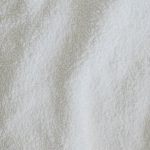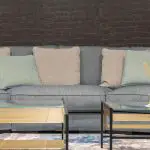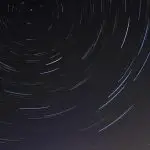You've probably never realized how crucial it is to choose the perfect fabric for covering your tube lights. However, the right fabric can make a world of difference in light diffusion, heat resistance, and overall aesthetic appeal.
In this guide, you'll discover the best fabric options for covering tube lights, considering factors such as maintenance, safety, and functionality. By the end, you'll have a mastery of which fabric is best suited for this essential task.
Key Takeaways
- Choose a fabric that evenly spreads light and minimizes glare and harsh shadows.
- Consider fabrics specifically designed for tube lights for optimal functionality.
- Select a fabric that enhances the overall aesthetic appeal of the space.
- Prioritize fabric durability and cost efficiency when selecting coverings.
Importance of Fabric Selection
You should consider using a fabric that diffuses light evenly and effectively for covering tube lights. Fabric selection plays a crucial role in the energy efficiency and functionality of tube light covers. When choosing a fabric, opt for one that's specifically designed to evenly spread light throughout the space. This not only ensures that the light is distributed uniformly but also minimizes glare and harsh shadows, creating a more comfortable and productive environment.
Energy efficiency is another key aspect to consider when selecting fabric for covering tube lights. Look for materials that are capable of maximizing the light output while reducing energy consumption. By choosing a fabric that allows more light to pass through while minimizing heat loss, you can significantly enhance the energy efficiency of your lighting system.
Light Diffusion Properties
When choosing a fabric to cover tube lights, it's important to consider the light diffusion properties. Different fabrics have varying abilities to diffuse light, affecting the visibility and overall illumination.
Understanding how fabric can impact light diffusion will help you make an informed decision when selecting the best fabric for covering tube lights.
Fabric Light Diffusion
To achieve optimal light diffusion, select a fabric with high translucency and even texture. The fabric material and color significantly impact light transmission and dispersion. When choosing a fabric for covering tube lights, consider the following properties:
| Fabric Property | Impact on Light Diffusion |
|---|---|
| Material | Determines translucency and light transmission. Natural fabrics like silk and synthetic options like polyester can provide different levels of translucency. |
| Color | Affects light dispersion. Light-colored fabrics tend to scatter light more evenly, while dark-colored fabrics may absorb more light and result in uneven dispersion. |
Tube Light Coverings
Frequently, fabric coverings play a crucial role in controlling the light diffusion of tube lights, ensuring optimal illumination for your space.
When considering tube light coverings, it's important to prioritize fabric durability and cost efficiency. Choose fabrics that are durable and can withstand the heat generated by tube lights. Additionally, opt for fabrics that are cost-efficient, as they'll provide long-term value for your lighting needs.
Some cost-effective options include polyester blends, cotton, or linen fabrics. These materials not only offer durability but also help in diffusing the light evenly, resulting in a well-lit and comfortable environment.
Diffusion for Visibility
For optimal visibility and light diffusion properties, choose fabric coverings that effectively disperse the tube light's illumination, creating a well-lit environment. When considering light transmission and fabric selection, keep in mind the following:
- Translucency: Select fabrics with high translucency to allow ample light to pass through, ensuring a bright and evenly lit space.
- Even Dispersion: Look for fabrics that provide even dispersion of light, preventing any harsh glares or dark spots.
- Softening Effect: Opt for materials that offer a softening effect on the light, reducing harsh shadows and promoting a more comfortable and visually appealing atmosphere.
Heat Resistance
You should consider using a fabric that can stand up to high temperatures when covering tube lights to prevent overheating. Heat resistance is a crucial factor to consider when choosing a fabric for this purpose. The fabric needs to be able to withstand the heat emitted by the tube lights without degrading or becoming a fire hazard. In addition to heat resistance, material durability is also important to ensure that the fabric maintains its integrity over time.
| Fabric Type | Heat Resistance | Durability |
|---|---|---|
| Nomex | High | High |
| Fiberglass | High | High |
| Silicone | Very High | High |
The table above outlines the heat resistance and durability of three common fabrics used for covering tube lights. Nomex and fiberglass offer high heat resistance and durability, making them suitable choices for this application. Silicone, on the other hand, provides very high heat resistance and high durability, making it an excellent option for environments with extremely high temperatures. When choosing a fabric for covering tube lights, prioritize heat resistance and durability to ensure the safety and longevity of the lighting system.
Aesthetic Appeal
Consider using a single color fabric to enhance the overall visual appeal of the tube lights installation. Aesthetic trends in interior design often favor minimalistic and clean looks. Opting for a single color fabric can create a sleek and cohesive appearance, drawing attention to the lighting itself and providing a modern and sophisticated touch to the space.
Fabric durability is crucial for maintaining the aesthetic appeal over time. Choose a fabric that isn't only visually pleasing but also durable enough to withstand regular cleaning and potential wear and tear.
Consider the texture of the fabric as it can add depth and visual interest to the tube lights installation. Textured fabrics can create subtle contrasts and play with light in intriguing ways, adding an extra dimension to the overall aesthetic.
Pay attention to the fabric's light filtering properties. Some fabrics may diffuse the light in a softer, more ambient manner, while others may create a more focused and directional lighting effect. Select a fabric that complements the desired ambiance and visual impact of the tube lights.
Maintenance and Cleanability
Regularly assess the fabric covering your tube lights to ensure it stays clean and well-maintained. Fabric durability is crucial for the longevity and maintenance of your tube light covers.
When selecting a fabric, consider its cleanability and the ease of maintenance. Some fabrics are more resistant to dust and dirt, making them easier to clean and maintain.
When it comes to cleaning instructions, follow the manufacturer's recommendations for the specific fabric used. This may include gentle vacuuming, spot cleaning, or even machine washing for certain fabrics. Pay attention to any special care instructions to maintain the fabric's integrity and appearance over time.
Regular cleaning not only keeps the fabric looking its best but also prevents dust and dirt from affecting the light output. By following proper cleaning instructions and choosing a durable fabric, you can ensure that your tube light covers remain clean and well-maintained, enhancing the overall aesthetics of your space while prolonging the life of the fabric.
Safety Considerations
When covering tube lights, it's crucial to consider safety. Look for fire-resistant fabric options to minimize the risk of fire hazards.
Ensure that the fabric provides adequate electrical insulation and allows for proper heat dissipation to maintain a safe environment.
Fire-Resistant Fabric Options
For the safest option, choose a fire-resistant fabric to cover tube lights in your home or workplace. When considering fire-resistant fabric options, it's important to prioritize safety and compliance with fabric testing standards.
Here are three fire-resistant fabric options to consider:
- Nomex: This aramid fabric is inherently flame-resistant and is commonly used in protective clothing for firefighters and industrial workers.
- Kevlar: Known for its exceptional strength and heat resistance, Kevlar is often used in applications where fire resistance is crucial, such as in automotive and aerospace industries.
- Carbon Fiber: This lightweight and durable fabric offers excellent fire resistance and is often used in high-performance applications where safety is paramount.
Selecting a fire-resistant fabric for covering tube lights can provide an extra layer of safety and peace of mind in your home or workplace.
Electrical Insulation Requirements
To ensure proper safety, choose an appropriate fabric that meets electrical insulation requirements when covering tube lights.
Electrical safety is paramount when selecting a fabric for covering tube lights. The fabric should provide sufficient insulation to prevent any electrical hazards. Look for fabrics that are specifically designed to offer electrical insulation, such as those with a high dielectric strength.
Additionally, consider the energy efficiency of the fabric, as it can contribute to the overall performance of the lighting system. Opt for fabrics that not only meet electrical safety standards but also help to enhance energy efficiency, thereby reducing operational costs.
Heat Dissipation Considerations
You need to carefully consider the heat dissipation properties of the fabric to ensure effective safety measures when covering tube lights. When evaluating material selection, performance requirements, and thermal management, fabric properties become crucial for ensuring optimal heat dissipation.
Here's what you need to focus on:
- Thermal Conductivity: Choose a fabric with high thermal conductivity to effectively dissipate heat from the tube lights and prevent overheating.
- Breathability: Opt for fabrics that allow heat to escape and fresh air to circulate, reducing the risk of heat buildup.
- Heat Resistance: Select fabrics with heat-resistant properties to ensure they can withstand the temperature generated by the tube lights without posing a safety hazard.
Considering these factors will help you make an informed decision when choosing a fabric for covering tube lights.
Recommended Fabric Options
Consider using flame-retardant polyester fabric for covering tube lights to ensure safety and durability. Polyester fabric is known for its exceptional durability and is available in a wide range of design options, allowing you to choose the perfect fabric that complements your space. When it comes to fabric installation, polyester is relatively easy to work with, making it a cost-effective choice for covering tube lights.
Another recommended option is fiberglass fabric, which offers excellent durability and heat resistance. Fiberglass fabric is known for its ability to withstand high temperatures, making it a reliable choice for covering tube lights. Additionally, it's available in various designs and can be easily installed, providing a cost-effective solution for your lighting needs.
For those looking for a more decorative touch, cotton fabric can be a suitable option. While not as heat-resistant as polyester or fiberglass, cotton fabric offers a wide array of design choices and can be a cost-effective solution for covering tube lights in spaces where heat dissipation isn't a primary concern.
Frequently Asked Questions
Can I Use Any Type of Fabric to Cover Tube Lights?
You should choose a fire-resistant fabric for covering tube lights to ensure fabric safety. Consider using a translucent or light-colored fabric to maintain good lighting aesthetics. Always prioritize safety and aesthetics when selecting the fabric.
How Do I Know if a Fabric Is Safe to Use for Covering Tube Lights?
To know if a fabric is safe for covering tube lights, check for fabric safety testing. Ensure the fabric is fire-resistant to avoid hazards. Look for certification or labeling indicating that the fabric has been tested for safety.
Are There Any Special Cleaning or Maintenance Requirements for Fabric Coverings on Tube Lights?
To keep fabric coverings on tube lights clean and well-maintained, regularly dust or vacuum them to prevent buildup. Check for any stains or discoloration and spot clean as needed. Avoid using harsh chemicals that could damage the fabric.
What Are the Potential Risks of Using the Wrong Fabric to Cover Tube Lights?
Using the wrong fabric to cover tube lights can lead to potential hazards. It's essential to consider fire safety, fabric safety, and material testing to avoid risks and ensure the safety of your environment.
Can I Use Decorative or Patterned Fabrics to Cover Tube Lights, or Should I Stick to Plain Options?
You can use decorative fabrics to cover tube lights, but safety concerns should be prioritized. Patterned fabrics may require more frequent cleaning. Stick to plain options for minimal risk and easier maintenance.
- DIY Fabric Projects for Beginners - July 24, 2024
- Fabric Crafts for Kids: Creative Ideas - July 24, 2024
- Upcycling Old Clothes: A Step-by-Step Guide - July 24, 2024







